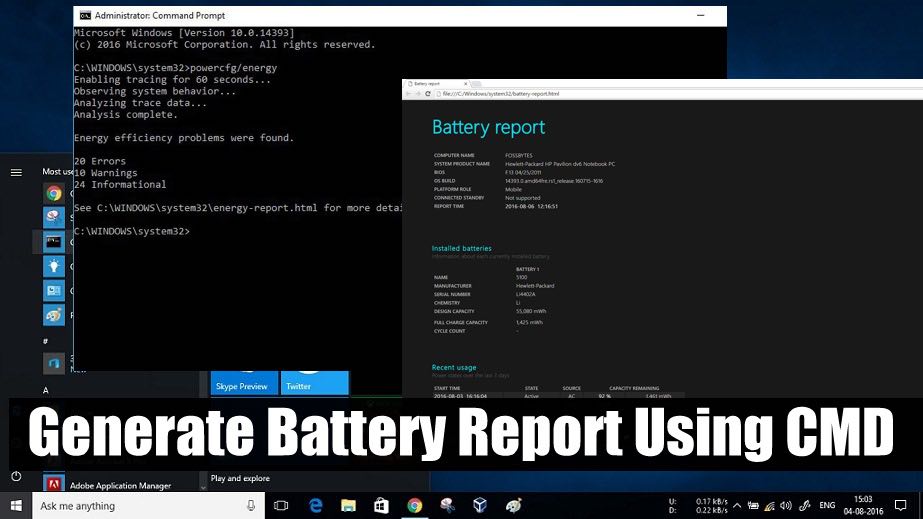
- #Battery status in laptop how to#
- #Battery status in laptop install#
- #Battery status in laptop windows#
NOTE: Battery health information is available only if a Dell battery is attached to your laptop.Įxcellent-Battery is operating at maximum capacity. Check contacts, power plug, and cables.Consider battery replacement for longer operating hours on battery.ĮPSA: Battery - The battery cannot provide sufficient power.
#Battery status in laptop how to#
See the Dell knowledge base article How to Troubleshoot Dell Laptop Battery Issues.See the Dell knowledge base article How to improve the performance of a Dell laptop battery.The battery charges but may experience shorter operating hours. Ensure that the battery is installed correctly.įor laptops with a nonremovable battery, contact Dell Technical Support for repair options.ĮPSA: Battery -The battery is reaching the end of its usable life.Table 1: SupportAssist or ePSA preboot diagnostic test error codes.ĮPSA: Battery - The battery is not installed.
#Battery status in laptop install#
#Battery status in laptop windows#
If you’re interested in getting more technical info about your battery usage and estimated capacity, you can use the Powerfg command-line option that’s built into Windows 11 to generate a battery report. Get a detailed battery report in Windows 11

You should handle the device with caution to prevent putting pressure on or puncturing the battery cell. If your device’s battery has expanded visibly beyond the mechanical enclosure, we recommend that you stop using the device. When a battery expands from deterioration, it’s most often caused by the formation of non-flammable carbon dioxide (CO2) gas. When a battery has deteriorated a lot, battery life might be very short or the lithium-ion cells may expand. If you need to store your device for a long period of time, it’s best to make sure the battery level is below 50% but not completely drained before storing your device. Batteries that are more fully charged and then stored may lose capacity faster. Store your device with the battery charged to below 50% but not completely drained. Extremely high temperatures can cause lithium-ion batteries to deteriorate at an accelerated rate, which can permanently lower the battery capacity. Try not to use your device or charge it at high temperatures. If your device supports Smart charging, turn it on to make sure that your device stays charged to the recommended battery level-even if you keep your device plugged in.Īs you use your battery, you should avoid some conditions because they can lead to the battery deteriorating and aging at a faster rate:

To help extend battery life and performance, try to keep the battery level between 20% and 80% several times a week instead of using your device for only a short amount of time, and then plugging it in to recharge the battery. Like all batteries, lithium-ion cells age and deteriorate over time and with use. Therefore, battery life may be reduced and you’ll need to charge your battery more frequently. When battery capacity is lower, the battery can’t be charged as much as it used to compared to when it was newer. This will help reduce deterioration in the battery cells. When using your device, make sure the battery regularly drains below 50%. This means you’ll need to charge your battery more often and the overall battery capacity may be lower. The capacity of lithium-ion cells is reduced after a certain number of times the battery is charged and then discharged. These batteries charge quickly, discharge at a steady rate, and they have high-energy density that allows for small cell sizes in batteries.īy understanding a little about lithium-ion batteries, you can help maximize your battery life and the overall longevity of the battery in your device: Lithium-ion batteries are the most common type of battery used in today’s mobile devices-including laptops and tablets.


 0 kommentar(er)
0 kommentar(er)
